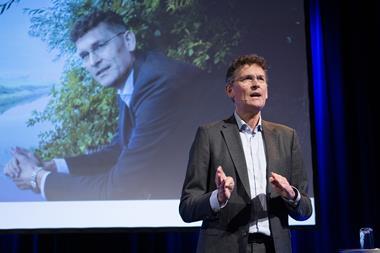Pension contributions for Dutch workers who already accrue pensions in defined contribution (DC) pension plans are much lower than contributions for workers in defined benefit (DB) plans, the country’s regulator AFM has found.
Some 65% of workers in DC plans have “limited” pension contributions of 10% or less, AFM has concluded in a survey of the pensions of one million workers with a DC plan. The share of workers with low accruals is “higher than expected,” the regulator stated.
AFM added that there is a risk that many workers in this group may end up being “disappointed” with their final pension, and called on social partners to consider the conclusions of the study when designing arrangements for the new DC pension system which will gradually come into force in the next few years.
Dutch pension funds, most of which currently have DB arrangements, will all have to make the switch to new DC arrangements some time between 2025 and 2027.
Of the 650,000 active DC participants in the survey with pension contributions below 10% of pensionable salaries, 200,000 were aged below 30.
In the current Dutch pension system, pension contributions as a percentage of a salary tend to rise progressively with age. However, according to AFM, contributions below 10% of a pensionable salary lead to “relatively limited pension accruals” for young people too.
AFM also looked at the extent to which DC plans make use of tax deductibility, noting that in the new DC system pension contributions of up to 30% of pensionable salaries will be tax-free.
According to the regulator, an average participant in a DC plan currently uses only 36% of this fiscal space. This is considerably less than the average DB participant, who uses on average 91% of this.
Shocking results
Commenting on AFM’s findings, trade union federation VCP said it finds the large gap between DC and DB accruals “incomprehensible” and “shocking”.
It advocates the introduction of a mandatory pension label, similar to the energy label required for homes, to make it easy for pension savers to see at first glance how adequate their pension plan is.
A spokesman for the Dutch Association of Insurers noted that pension plans to which relatively few contributions are made are also “safe and cost-effective” for participants, conceding, however, that more attention could be paid to managing the expectation of participants.
“If a participant does not go into their pension, there is indeed the risk of excessive expectations,” he said.
Perhaps the new system will help change that, he added. “Schemes will become easier to assess and compare in the new DC system on the basis of contribution levels.”
The Dutch pension federation sees the AFM report as a wake-up call for participants.
“We consider this AFM report a useful call to participants to carefully check their personal pension statements to see whether they are accruing a sufficient pension right now,” a spokesperson said.
Pension inadequacy across all ages
Although some of the lowest pension accruals are concentrated among younger participants and lower incomes, it appears that the problem of pension inadequacy is widespread.
According to AFM, no age or income group currently uses more than 50% of the fiscal space in their DC plans.
Higher-income participants in DC plans utilise more of the fiscal space than lower-income participants, but still accrue relatively little. Among participants with an annual income of at least €55,000, three-quarters use less than 50% of their tax allowance.
This article was first published on Pensioen Pro, IPE’s Dutch sister publication. It was translated and adapted for IPE by Tjibbe Hoekstra.






























No comments yet